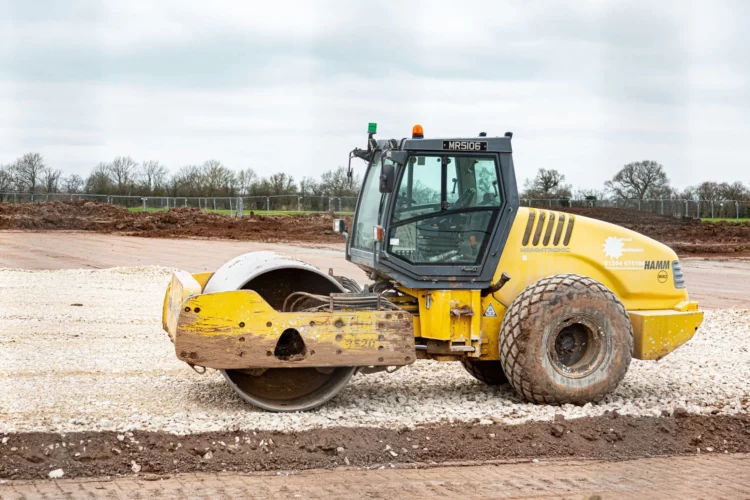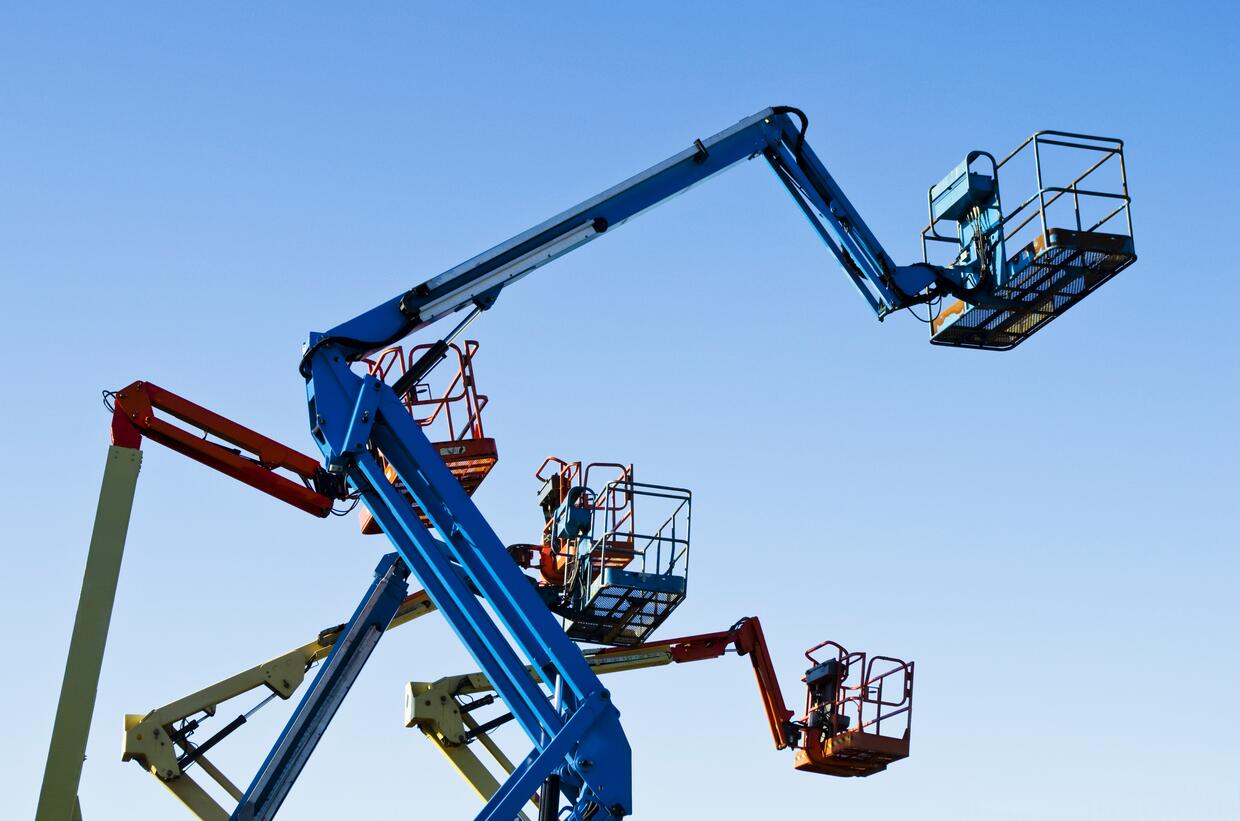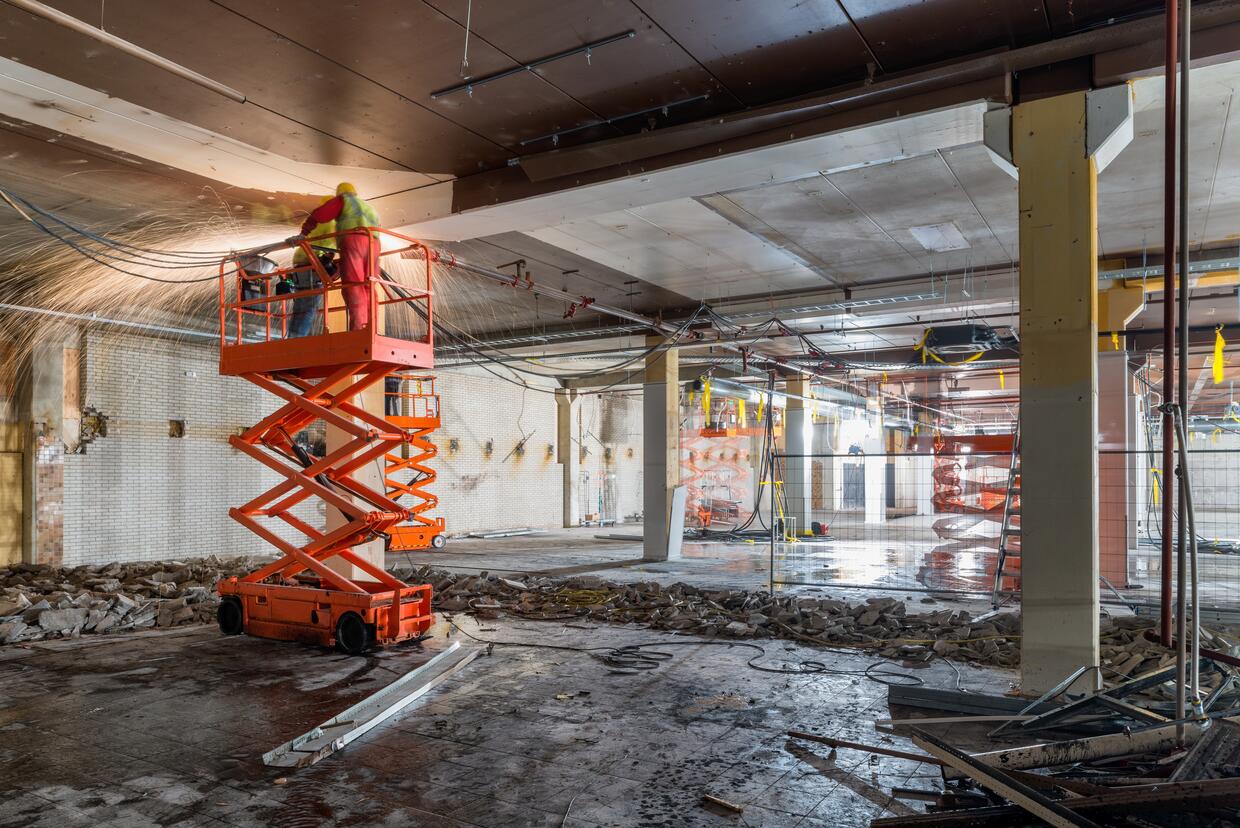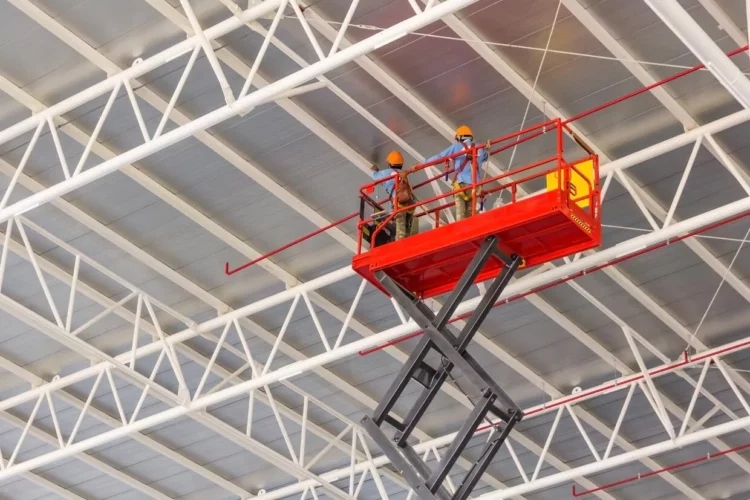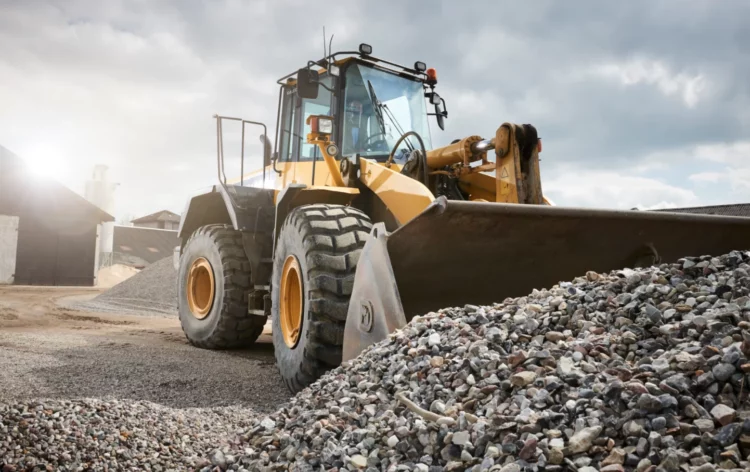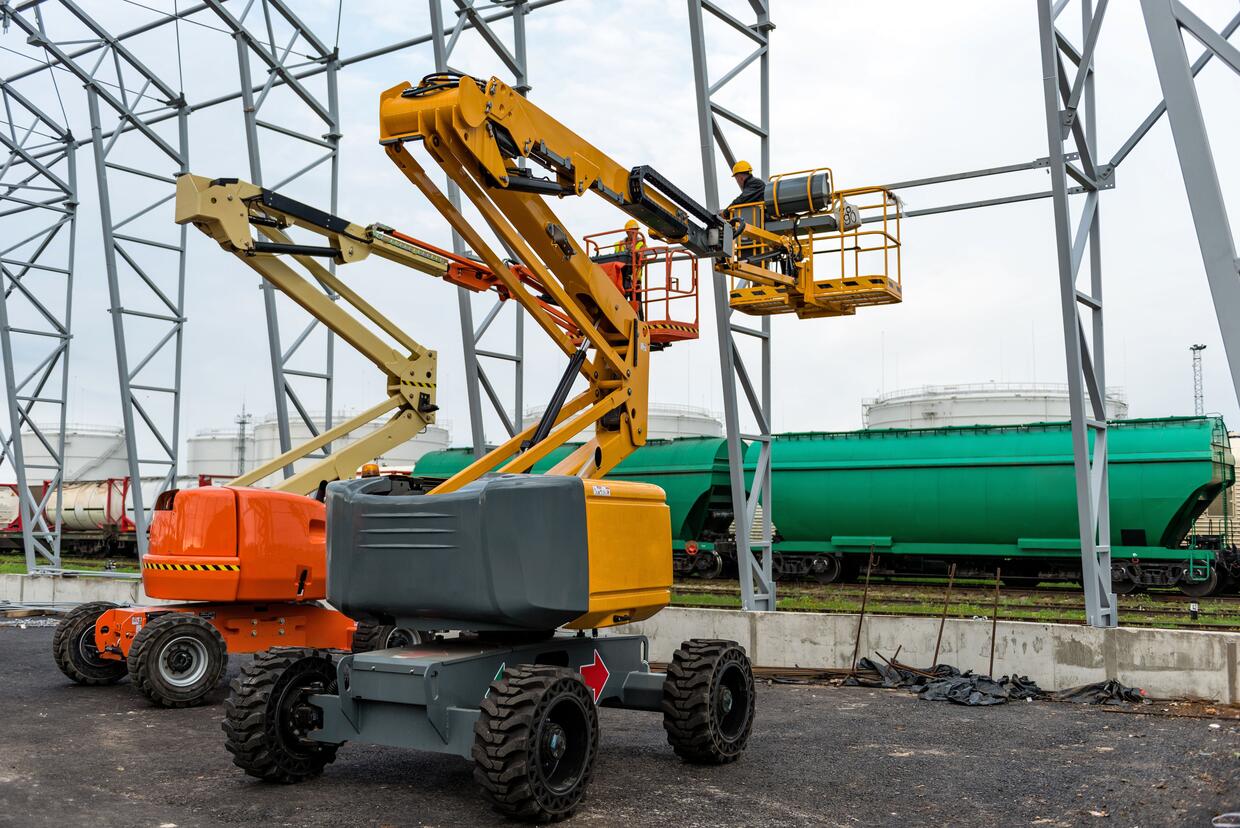
Over the course of any construction project, the need for access to high places may arise, during which you have two choices: a ladder or a lift. For most small-scale operations, a ladder is sufficient enough to provide flexibility and ease of mobility within the construction site. A construction lift offers numerous benefits for larger-scale operations that greatly enhance efficiency and productivity.
What are Construction Lifts?
Construction lifts are a special type of motorized forklift used to help construction workers carry out specific tasks by providing easier access to high elevations. These machines generally consist of a motorized vehicle equipped with heavy-duty tires and a work platform, which can be raised or lowered as needed.
Construction lifts are vital in facilitating construction and maintenance tasks by providing construction workers easy access to hard-to-reach work areas. They are considered safer and more efficient than ladders due to their stability and enhanced safety features.
Many types of construction lifts are designed for accomplishing different tasks at the construction site. The choice of construction lift will depend on several factors, such as the lift components available and their main purpose on the site. Understanding these lift components and how they function can help you select the best lift type for your construction project.
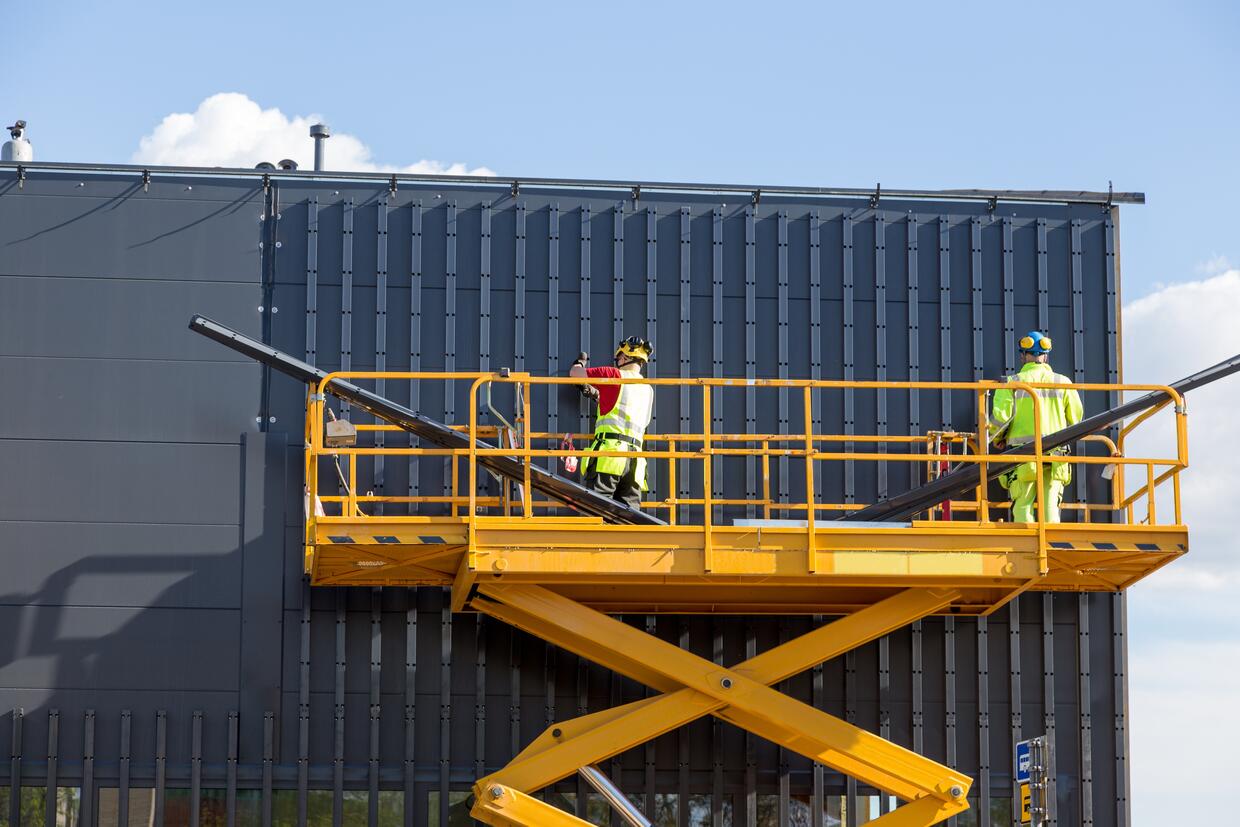
Different Components of Construction Lifts
Construction lifts comprise several key components that work together to accomplish their primary purpose. Different types of lifts may have other lift parts names or may not have the same components. Generally, these are the main components of construction lifts:
Base and Chassis
Both the base and chassis are essential components that give the construction lift structural support and stability. They form the main foundation of the lift and are built from high-grade steel and other sturdy materials to ensure the robustness of the frame.
To enable movement across the construction site, the base is equipped with wheels or tracks to maximize the lift’s maneuverability. Often, these will also have stabilizers or outriggers extending from the body to provide additional support to the base. These are crucial to avoid tipping, especially when carrying heavier loads or when the maximum height is reached.
Lifting Mechanism
The lifting mechanism is responsible for raising and lowering the platform or carriage. Depending on the type of lift, this mechanism can vary. Telescoping boom lifts use hydraulic cylinders that extend and retract the boom sectors, which is different from scissor lifts. The lifting components of this lift consist of linked supports that elongate or compressor in a scissor-like motion.
Platform or Carriage
Platforms or carriages are a lift’s main components that house workers, equipment, or materials during vertical transportation. Depending on the lift type, safety requirements of the job site, and the purpose, the platform can either be an enclosed cage or an open platform.
Lifts that use cage-type platforms are typically used to enhance the security of workers and prevent falling accidents. Meanwhile, open platforms enable easy access and quick entry/exit during transport.
Boom or Mast
The boom or mast are lift components that support the platform while increasing or decreasing elevation. As with other components of this lift, this can differ in form, depending on the lift type.
Telescoping boom lifts, for example, use booms that consist of multiple sections that extend and retract, allowing different height adjustments. Articulating boom lifts, meanwhile, have multiple joints in the boom, which provide greater flexibility in reaching around obstacles or accessing confined spaces.
The boom is fixed for mast climbers and construction elevators, while the platforms move along vertical tracks when lifting workers and equipment.
Controls
One of the most crucial components of construction lifts is its controls. This is located in different areas across the machine for different lift types, such as in the base or platform. Some modern machines have digital interfaces as part of their controls, while others use analog components, buttons, levers, and joysticks to control the lift’s movements.
Power Source
All construction lifts are connected to some power source to provide the energy needed to drive the lifting mechanism and move the platform. This can be either of the following:
- Gas or Diesel-Powered Lifts: Generates power through an internal combustion engine.
- Electric-Powered Lifts: Can either be battery-powered or plugged into an external power source. These are the preferred power source for indoor environments to lessen emissions.
Guide Rails
Some construction lifts may require the guidance of guide rails to ensure the smooth and stable vertical movement of the platform across the mast. In this setup, the platform is guided by rollers or wheels that run along the guide rails, which minimizes swaying during movement.
Safety Devices
Several safety features are installed in construction lifts to prevent accidents and ensure the safety of workers during vertical transport. Some of the most common safety devices and features installed on construction lifts include:
- Emergency stop buttons
- Safety interlocks
- Motion alarms
- Overload sensors
- Tilt sensors
Counterweights
For stationary construction lifts, like construction elevators, a counterweight is needed to balance the weight of the carriage. Their installation is essential to offsetting the weight of the loaded platform and reducing the overall load that the motor must lift. The action of the counterweight enhances energy efficiency and prevents excessive strain on the lifting mechanism.
Electrical System
The electrical system comprises all the electrical components within the construction lift, which include all wiring, fuses, and other devices required to operate the lift. This system mainly distributes electricity to the motor, controls, lighting, and other electrical components.
Stabilizers
In some cases, the lift may require additional support to enhance its stability further when the base doesn’t provide enough support. Stabilizers are extendable arms or legs that prevent the lift from tipping over during operation. These are crucial when the lift is working at its maximum height, working with heavy materials, or when standing on uneven ground.
What are the Applications of Construction Lifts?
The main purpose of construction lifts is to elevate workers to gain access to higher places safely and efficiently. These capabilities can be applied in diverse applications throughout the construction site. The following are typical examples of tasks that can be performed efficiently with the help of construction lifts:
- Roofing
- Painting
- Exterior cleaning
- City maintenance
- Electrical and piping installations or repairs
- Warehousing
- Erecting scaffolding
- Tree trimming and landscaping
Generally, construction lifts are best suited for outdoor construction tasks. However, other types of lifts, such as the scissor lift, can also be used indoors.
Find the Right Construction Lifts at National Dispatching
Construction lifts are essential pieces of equipment that can help improve efficiency and productivity within your job site. When choosing equipment for your construction project, it is crucial to understand the lift part’s name and function to maximize its usage as you match it with its intended application.
National Dispatching is a full-service rental equipment provider dedicated to fulfilling all heavy-duty equipment needs in job sites nationwide. Since 1988, we have proudly worked with contractors and construction outfits of all sizes, equipping them with equipment solutions that match their every requirement. Get in touch with us today for all your rental equipment needs.

